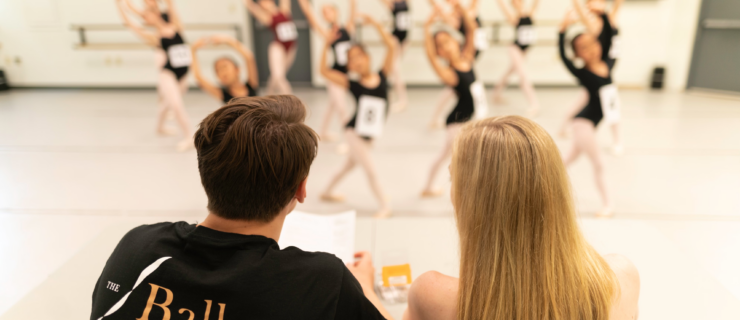How to Rock the Toprock
For most people, the word “breaking” brings to mind flashy feats on the floor. But those eye-catching tricks aren’t the whole picture. Breaking actually features four different categories of movement: toprock, footwork (or “downrock”), freezes, and power moves. And while toprocking—the part of breaking that’s done standing up—is often overlooked, it’s one of the most critical parts of the art form.
“As b-boy Mr. Wiggles taught me, breaking is like a sentence, and toprocking is the introduction,” says seasoned street dancer Valerie “Ms. Vee” Ho, who teaches at Broadway Dance Center, Pace University, Peridance, and Juilliard. So how can dancers start their sentences off in a way that’ll keep people listening—and watching?
Your browser does not support the video tag.
Acknowledge the History
“It’s important to know the history of toprocking, the story behind it,” Ms. Vee says. “A lot of its gestures mean something—it’s not just arbitrarily throwing your hands in the air. By doing your homework, you get connected to the steps in a different way than by just physically copying movement.”
Toprocking developed as part of breaking in the 1970s, and evolved in the ’80s as breaking became a more widely popularized dance form, thanks in part to movies like Flashdance, Wild Style, and Breakin’. Later, b-boys Mr. Wiggles and YNOT toured the world with a series of battles and workshops known as Top Rock City for several years. The famous French dance competition Juste Debout (which means “just standing”) still has a toprock category. An important side note: While some people confuse toprocking with another style of dance called rocking or uprocking, the two are completely separate. (Rocking evolved in the late 1960s in Brooklyn as part of gang culture, with movements that mimicked strikes or weapons.)
Learn the Fundamentals
In classes, b-boy Ray “Nasty Ray” Mora—who’s danced for Justin Bieber and in the films All Styles and Step Up 3D—often starts by teaching the basics of toprocking, which include Indian steps (also called two-steps), crossovers, and side steps. Many of the movements have a lot in common with Latin dance, especially salsa. “There’s a lot of Latin influence in break beats and music,” Nasty Ray says. He also sees some overlap with other dance styles connected to hip hop, including a move that people with jazz backgrounds “might describe as a kick-ball-change.”
After dancers master those basics, they can add more flair and funkiness to the vocabulary. “Once you learn the foundational steps of toprocking, it’s all freestyle, and you can do it to any beat,” says Nasty Ray. “You can add more details that make it pop.”
 B-boy Ray “Nasty Ray” Mora demonstrating toprocking (photo by Josh Salcedo, courtesy Mora)
B-boy Ray “Nasty Ray” Mora demonstrating toprocking (photo by Josh Salcedo, courtesy Mora)
Get Musical
Nasty Ray says toprocking is all about plugging into the music and focusing on yourself. “Toprocking makes it easier to show who you are as a person, because you’re performing at eye level instead of down on the floor,” he says. “You can do power moves all day, but when you’re on your feet, it’s a chance to connect with the music on a higher level. The people who focus on toprocking encompass the feeling of the song with every movement.”
Similarly, Ms. Vee says toprock—as a part of breaking, hip hop and all street dance—can be a “physical manifestation of the music,” and can showcase a dancer’s ability as a performer. She recommends identifying the different instruments and layers in the track that you’re dancing to, and then reflecting them in your movements. “Be creative and get funky with it,” she says.
While the mainstream dance world tends to emphasize breaking’s power moves, inside breaking culture, a strong toprock is essential. “You cannot call yourself a b-boy or b-girl unless you have toprock in addition to footwork, freezes, and power moves,” Ms. Vee says. “They’re all part of the tool belt.”
A version of this story appeared in the November 2018 issue of
Dance Spirit with the title “How To Rock the Toprock.”




